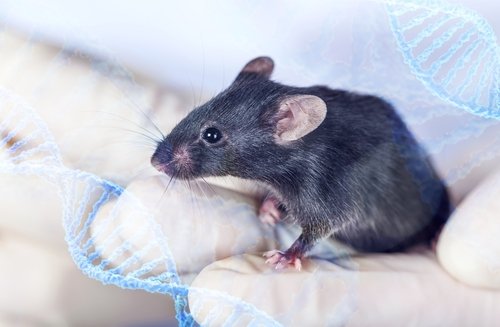Linker Proteins Restore Muscle Cell Function in Congenital MD Animal Models, Study Shows

Scientists have designed two proteins that stabilized muscle cell membrane support and maintained the structure of muscle fibers in animal models of congenital muscular dystrophy (MD).
The finding, from the University of Basel in Switzerland, can not only provide new insights into the underlying mechanisms of muscular dystrophy, but may also offer a new therapeutic path to restore muscle structure and function in patients with the disease.
The study, titled “Linker proteins restore basement membrane and correct LAMA2-related muscular dystrophy in mice,” was published in Science Translational Medicine.
Mutations in genes encoding elements responsible for muscle cell membrane support are pointed out as the cause of several muscular diseases. These genetic mutations commonly lead to structural changes in muscle cells with subsequent muscle function impairment.
Congenital muscular dystrophy is a rare and severe form of MD, caused by mutations in a gene that encodes the structural protein called laminin-α2. This illness is characterized by progressive impairment of muscle function, leading to loss of walking ability and respiratory difficulty. The prognosis of these patients is very poor, with many not reaching adulthood.
“The children born with this disease are also called ‘floppy infants’ because of the poor muscle tone and weakness,” Judith Reinhard, first author of the study, said in a news release. “The disease becomes more severe with increasing age, as the muscle wasting progresses.”
In the study, scientists took advantage of a laminin-α2 natural replacement called laminin-411, which is found in muscle cells but lacks the potency to keep the structure of muscle cells. They designed two linker proteins to reinforce and help laminin-411 activity in muscle cells.
The researchers genetically manipulated mice lacking laminin-α2 to express the two linker proteins they developed. They found that activity of the linkers did restore muscle cell structure and attachment, improving muscle fiber maintenance. In addition, the linkers also improved many of the symptoms of MD the animals presented, including muscle function and overall survival.
“When animals with a laminin-α2 defect express the two linkers, there was a significant improvement in muscle structure and force and an increase in body weight,” said Prof. Markus Rüegg, the lead scientist in the study.
“We were particularly pleased to observe that these animals also had an almost normal lifespan. Some of them even survived their healthy siblings,” Rüegg added.
The research team is planning to assess the potential beneficial effects of these linker proteins on muscle cell function restoration in more advanced stages of congenital muscular dystrophy.
“Both of the designed linker proteins may possibly be used in the future as a gene therapy treatment for congenital muscular dystrophy,” Rüegg said. “Our study is a nice example of how the understanding of a disease on the molecular and cellular level results in new therapeutic options.”






